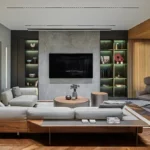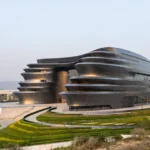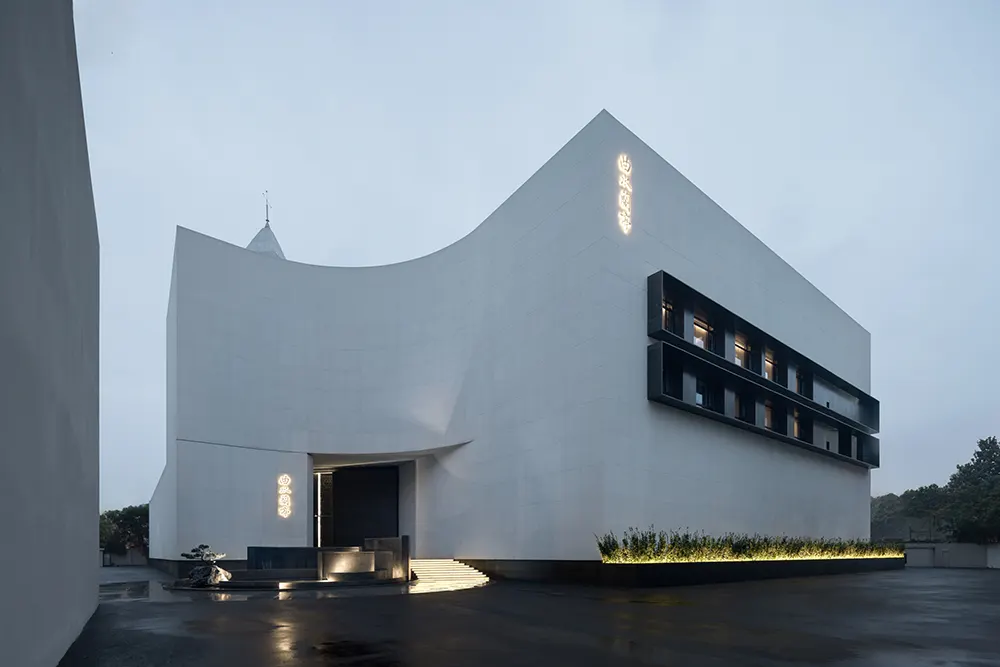
Qushui-Lanting Shanghai sets a new benchmark for wellness architecture in the city. Designed by DJX Design, the project centers on the healing essence of water, drawing inspiration from Eastern philosophies and visual traditions. The design reframes the idea of an urban getaway, not through distance, but through sensory recalibration and spatial calm.
Curving silhouettes ripple through the skyline, softening the edges of urban density. The contrast of black and white materials draws directly from the aesthetics of ink painting, creating a dynamic visual interaction that changes with the light.
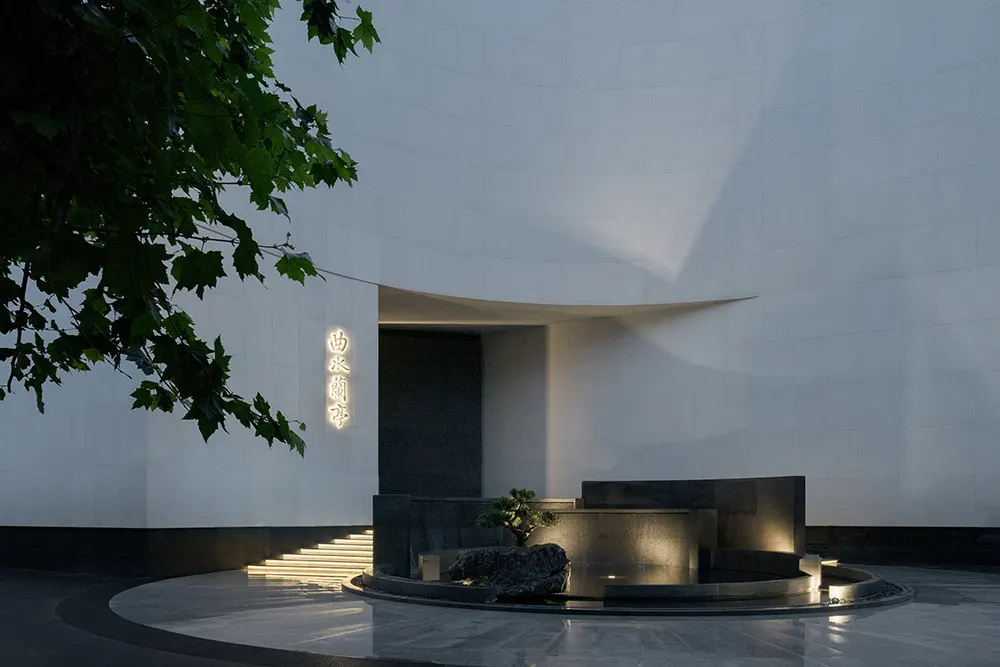
Water as Pathway and Form
From the very first step, the experience unfolds gradually. Flowing water leads visitors through layered scenes of quietude, evoking the soundscape of untouched nature. Organic architectural shapes stretch beneath the open sky, with arcs and shadows guiding the eye and the body inward.
Stone, water, and garden elements bring the language of classical Chinese landscaping into a contemporary context. At the entry, rooflines curve upward in reference to the “Flowing Goblet Pavilion,” creating an elegant threshold that introduces the space’s refined character. Every component, from material to spatial layout, supports a shift from external noise to internal stillness.
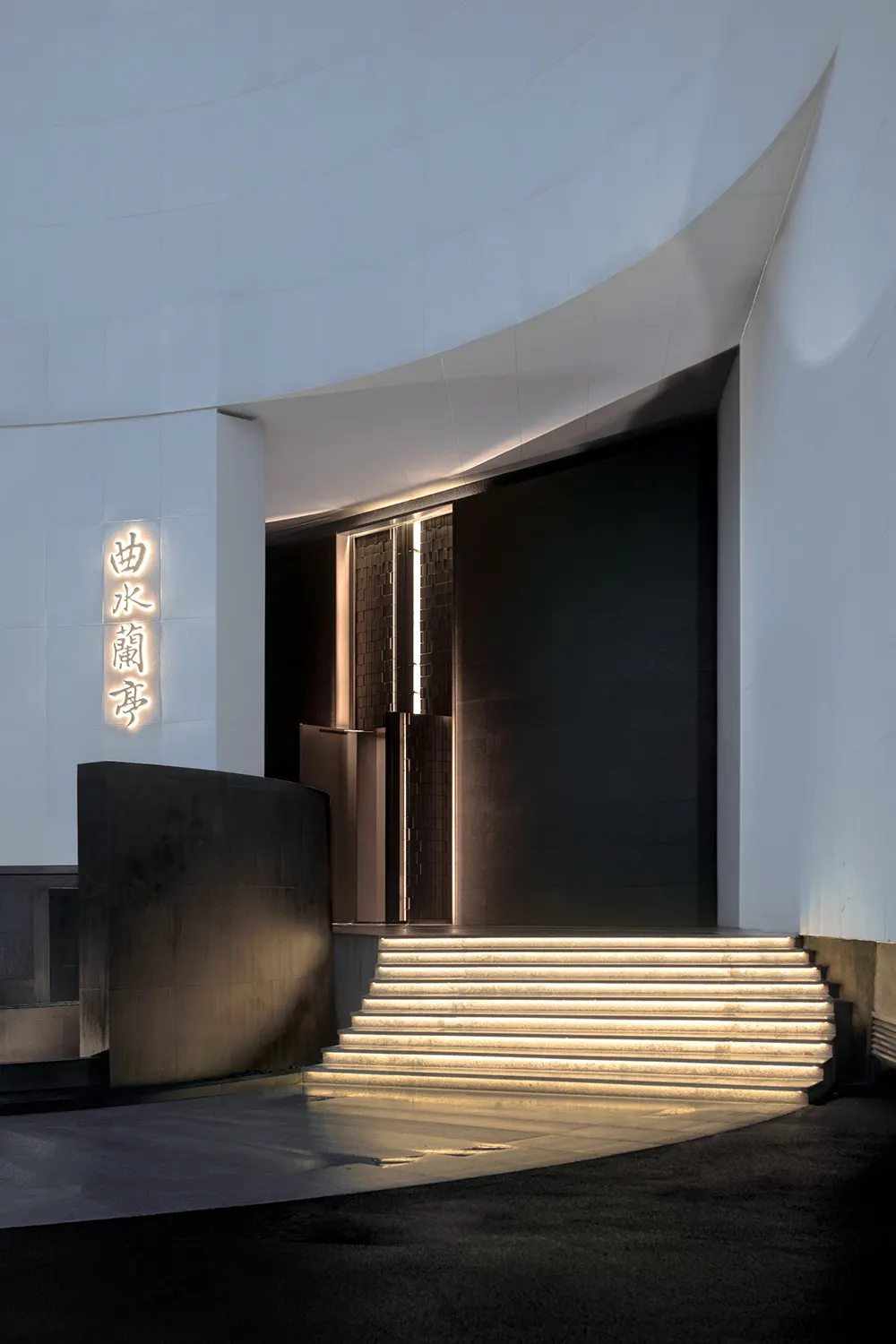
Architectural Space Inspired by Nature
In the central lobby, DJX Design challenges conventional design by replacing rigid walls with ascending forms that resemble mountain gorges. Skylights direct natural light across clean surfaces, forming layered shadows that animate the environment. These elements create a spatial experience that feels expansive without sacrificing focus. Across all spaces, vertical surfaces fall like waterfalls or scrolls. Light flickers subtly across them, evoking the sensation of being inside a moving image.

Wellness Through Texture, Light, and Ritual
The spa takes cues from mountain echoes and river mist. Stone, water, and filtered light work together to create a layered sensory atmosphere. Here, design supports wellness through immersive experience. In the rooms shaped like “Fire Mountain” cabins, the air carries the soft scent of untreated wood, calming breath and nerves alike.
Traditional Chinese health principles, including Taoist and Zen philosophies, inform the approach to well-being. Paired with modern spa technologies, treatments like aromatherapy and hydrotherapy deliver a grounded yet refined experience
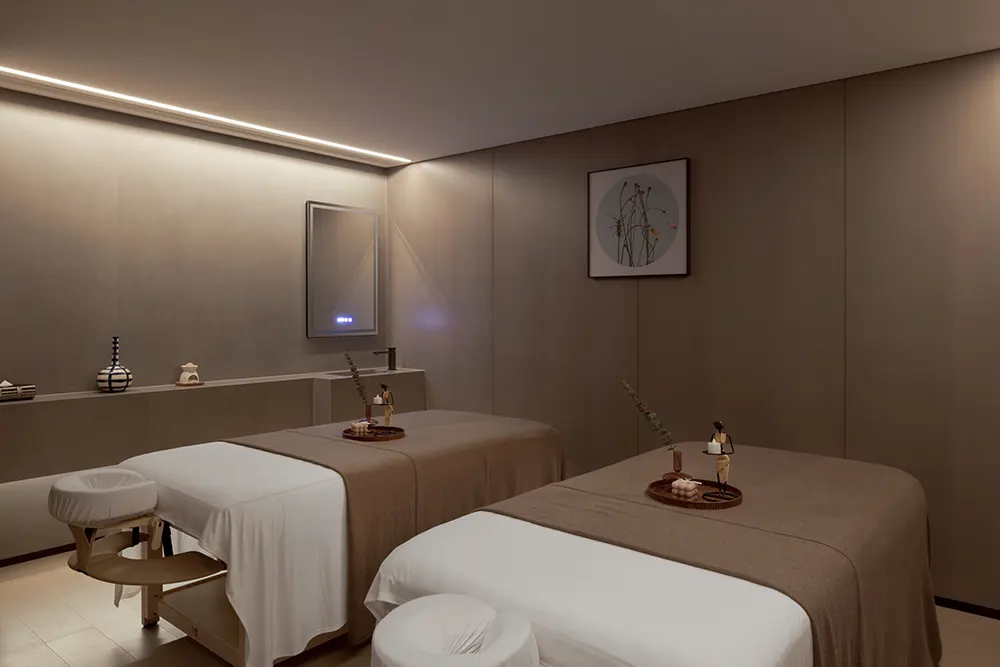
Social Rituals and Sensory Experience
Social space evolves into sensory theater. From sight and sound to taste and touch, each moment follows a deliberate rhythm. The restaurant’s private dining rooms use circular forms to echo cosmological themes “round heaven, square earth,” while also ensuring privacy and comfort. These rooms encourage pause and reflection, supporting shared experiences without interruption.
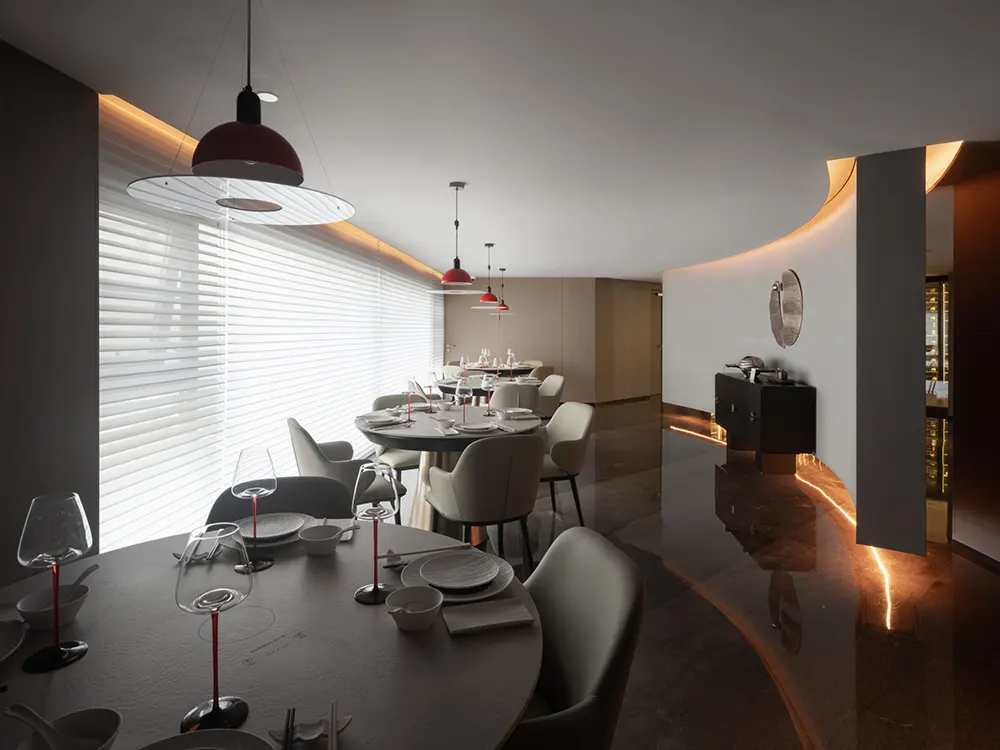
In the wine bar, deep red cabinetry surrounds a soft-lit water bar. Shadows ripple across glass and bottle, echoing the name Qushui and referencing the ceremonial roots of toasting culture in ancient gatherings.
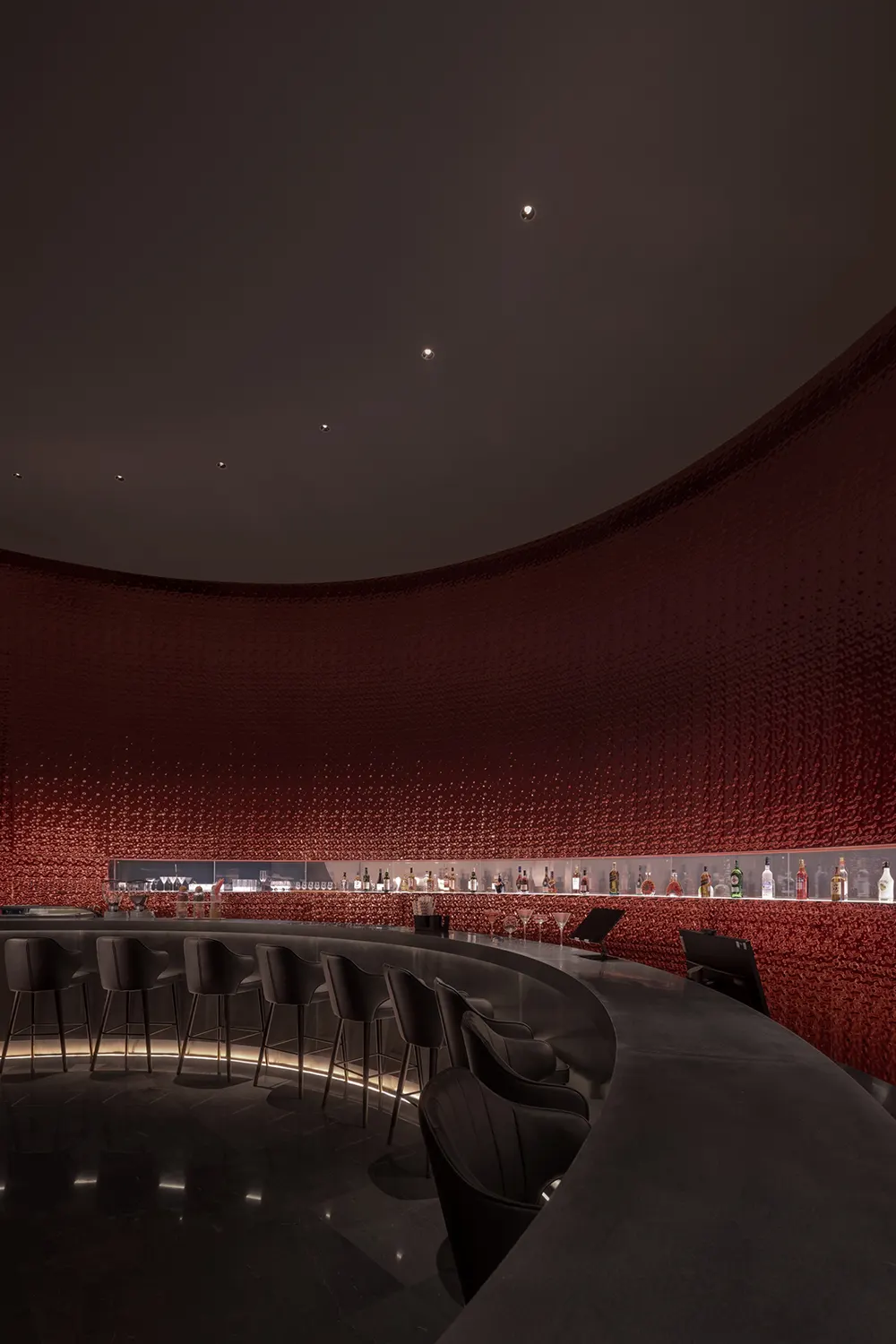
A Return to Internal Balance
In its final gesture, Qushui-Lanting Shanghai turns inward. Water becomes not just an architectural device or visual metaphor but a quiet pulse running through every zone. Flowing gently through corridors and spa rooms, it reminds visitors to find presence, to release tension, and to remember simplicity.
The symmetry of the central corridor suggests order without rigidity. Guest rooms connect with sunken gardens and tea lounges, offering softness and shelter. Through scent, light, proportion, and temperature, every space responds to the body in real time.
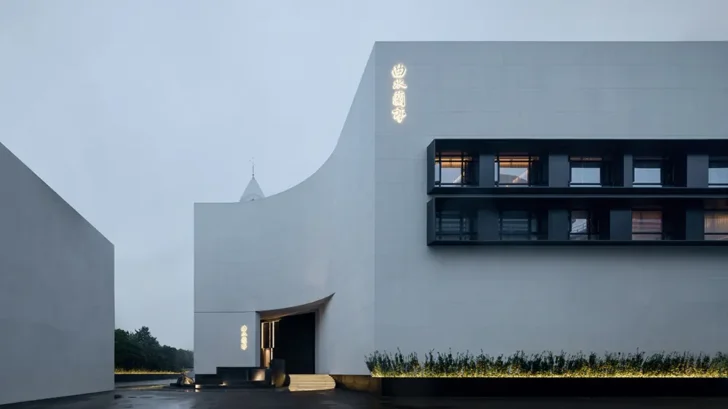
Project Name: Qushui-Lanting Resort Hotel
Location: Shanghai, China
Area: 18,000 m²
Completion: 2024
Scope: Architecture, Interior, Lighting
Design Firm: DJX Design, Beijing
Lead Designer: Wang Bing (Founder of DJX Design)
Photography: DJX Design,Xiangshang Group


